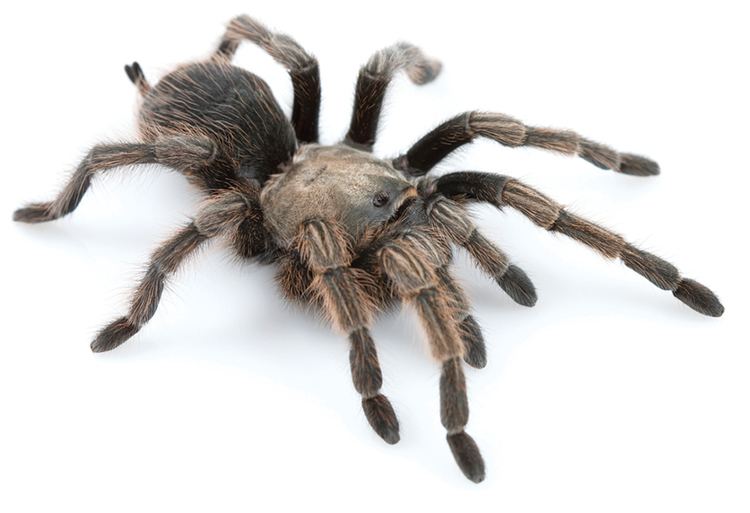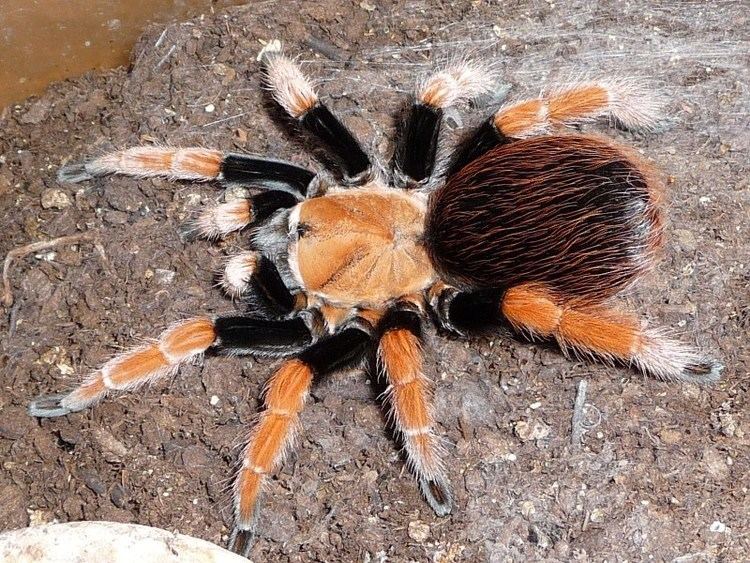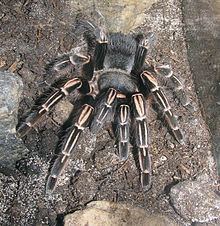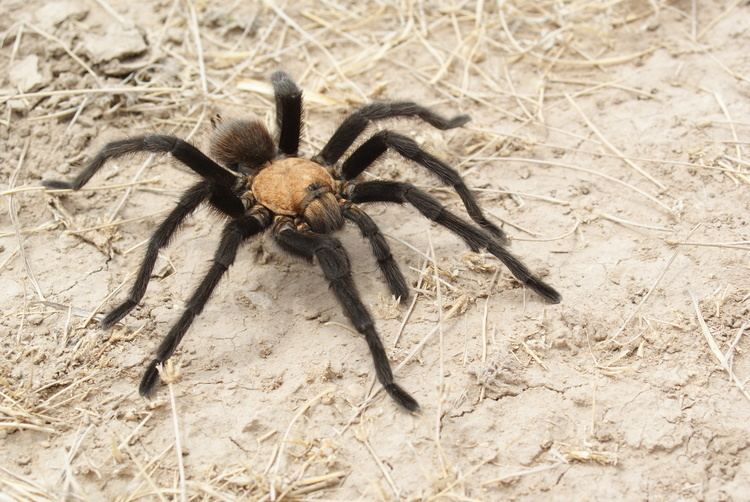Scientific name Aphonopelma Order Spider | Higher classification Theraphosinae | |
 | ||
Lower classifications Aphonopelma seemanni, Aphonopelma chalcodes, Texas brown tarantula, Aphonopelma anax | ||
Collecting aphonopelma hentzi from the wild
Aphonopelma is a genus of tarantulas, members of which are native to the Americas. It includes nearly all of the North American tarantulas north of Mexico and a considerable part of the tarantulas which range into Central America. About 90 species have been described, but many, if not most, of these are inadequately studied and very little is known about them. Most are large and, like other New World tarantulas, they have urticating hairs. Most are docile in captivity. The taxonomy is poorly understood and species are difficult to tell apart, especially those that are brown or black without other pattern. In captivity they will eat crickets, in the wild they will eat most smaller insects. Most species found in the Southwestern United States have an adult leg span of 4.5 inches (11.5 cm), though some Arizona species have been known, on occasion, to just barely exceed 6 inches (16 cm).
Contents
- Collecting aphonopelma hentzi from the wild
- Handling big desert blonde tarantula aphonopelma chalcodes inferion7
- Taxonomy
- Phylogeny
- Species
- References
The species pictured is Aphonopelma seemanni or Zebra Tarantula (F. O. P.-Cambridge, 1897), which has striped legs. This species produces silk from spinnerets on the feet as well as in the abdomen.

Handling big desert blonde tarantula aphonopelma chalcodes inferion7
Taxonomy

The genus has a complicated taxonomic history. It was erected in 1901 by Reginald I. Pocock when he split up Eurypelma (now Avicularia), with the type species Eurypelma seemanni. Pocock also separated off the genus Dugesiella. Two more new genera were later distinguished from Aphonopelma: Delopelma by Alexander Petrunkevitch in 1939 and Chaunopelma by Joseph C. Chamberlin in 1940. In 1985, Robert J. Raven reviewed mygalomorph genera and considered the differences among all these genera to be insignificant. He synonymized them under the name Rhechostica, which had been published by Eugène Simon in 1892, so had priority. Since the name Aphonopelma was much better known than Rechostica, the International Commission on Zoological Nomenclature in 1991 agreed to give Aphonopelma precedence over Rhechostica. In 1995, Smith erected the genus Apachepelma for the species A. paloma; in 1997, Prentice transferred it back to Aphonopelma.
Phylogeny

Molecular phylogenetic studies suggest that the genus is not monophyletic. There appear to be two groups of species: one from Central America, including the type species A. seemanni from Costa Rica, and another made up of species found in the United States. The relationship between the two groups and the genus Sericopelma is shown in the cladogram below. It is likely that with further research a new genus will be needed for the American group of species.
Species
As of February 2016, the World Spider Catalog accepted 87 species. A monograph of the genus within the United States, published in 2016, made some major revisions. Only 15 of the original 55 US species were fully accepted, 33 being reduced to synonyms and 7 to nomina dubia (doubtful names). A further 14 new US species were then described. These revisions are shown in the following list.
